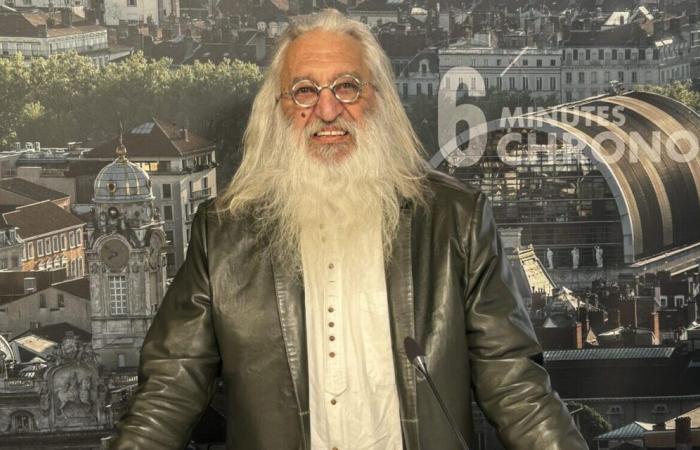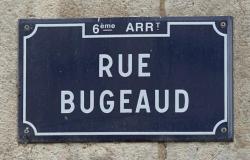
There are 25 copies in France and around 150 worldwide. Its price at auction varies from 40,000 to more than 1.5 million euros depending on the edition, its condition and its history.
On the occasion of the centenary of the former medical interns of Lyon, the General Association of the Lyon boarding school is organizing, Thursday, November 21, an evening in the Grand salon of the Hôtel de Ville – Justin Godard, wink to the founder of the International League Against Cancer, former Minister of Health (1932) and mayor of Lyon (1944-1945).
For the occasion Alain Fisher, president of the Academy of Sciences and “Mr Covid-19”, responsible for advising the government on its vaccine strategy,
will give a conference on “Innovative therapies, economic and ethical issues”, followed by an exchange with the public.
Read also:
– The 2023 Nobel Prize in Medicine told by a Lyon surgeon
– Lyon, the incredible treatise of “Dr Mustache”
On this occasion “Vesalius” will be presented, named after the eponymous anatomist and doctor considered by many historians of science as the greatest anatomist of the Renaissance and even the greatest in the history of medicine. A copy from 1555, restored thanks to the Hospices Civils de Lyon, was discovered on a table in a corner of a warehouse, in a baker's paper bag. “Before we were not allowed to dissect: Gallienus, Hippocrates did anatomy from the skeletons of birds, pigs, pigs, horses, but this is the first time where the skeleton is presented in animated skeleton It's an event this book was touched with the hands of Michelangelo, Raphael, Leonardo da Vinci.” enthuses Patrick Carlioz, pediatric surgeon and president of the General Association of the Lyon boarding school.
The restored HCL “Vesalius”
Thanks to the investment of passionate documentalists, the historic anatomy work was restored 467 years after its creation.
Article published in “Tonic!”, HCL’s internal magazine in September 2022
It is nicknamed “Le Vesalius”, from the name of its author, Andrew Vesalius, physician to Charles V and recognized anatomist of the Renaissance. A founding work on human anatomy, it is considered by some to be one of
of the most beautiful books in the specialty.
There are 25 copies in France and around 150 worldwide. Its price at auction varies from 40,000 to more than 1.5 million euros depending on the edition, its condition and its history.
The copy of the Hospices Civils de Lyon is a second edition, printed in Basel in 1555 by the publisher Johannes Oporinus. Anatomy plates, engraved
on wood in Venice, are attributed to Calcar, a student of Titian. They show skinned skins, skeletons captured for the first time in everyday postures, as well as 24 small initials surrounded by cherubs in
full medical activity. “Among these boards, some were intended to be cut out and glued onto the skinned figures to form a 3D model”reports Frédéric Riondet, head of the central documentation of HCL.
Its period binding, in cold-stamped white goatskin, with beveled wooden boards (1), brass clasps and a spine with five ribs (2), demonstrates a particularly careful luxury craftsmanship. “At the time, the purchaser had the book bound according to his means. Considering the richness of the upper cover, the latter must have been a wealthy person”informs Caroline Mami, librarian, intern at HCL as part of a master 2 Written and image cultures at the National School of Information Sciences and Libraries (Enssib).
Likewise, the richness of the work is also found in the typography in humanist characters enriched with Greek and Hebrew letters, for which the printer had the capitalization (3).
The copy was exhibited, in 1926, alongside other Renaissance works from the HCL archives, by the General Association of the Hospices Civils de Lyon boarding school (Agil) to which we owes its conservation.
In the fall of 2021, Caroline Giroudon, librarian, offers restoration
of this emblematic piece of 16th century medicine. And it was in January 2022 that the famous engraved boards gradually found a second lease of life thanks to the meticulous work of Aurélia Streri, a restorer in Lyon.
Today, Frédéric Riondet wishes to reissue the 1926 exhibition in 2026. This project requires organizing the repatriation of historical works to the Central Documentation, their restoration and their preventive conservation under appropriate conditions. “The good management of this collection
heritage will make these works exhaustively available to scientists from all disciplines. It is not only essential to advance our knowledge but it is also the way to fulfill our moral obligation to preserve and promote the donations that have been made
over the centuries.”
(1) In printing, wooden board used as a support. Used here
on the cover of the book (upper and lower covers).
(2) Space between the ribs of the spine of a book.
(3) Wooden locker divided into boxes containing all the
fonts composed of a mixture of lead,
antimony and tin. According to Caroline Mami, this composition
invented by Gutenberg plays a large part in the success of
printing (with the composition of ink and the press).
The full transcription of the interview with Patrick Carlioz
Hello everyone and welcome to this new meeting of 6 minutes flat. Today we welcome Doctor Patrick Carlioz. Good morning.
Bonjour.
Doctor Patrick Carlioz, you are a pediatric surgeon, member of the National Academy of Surgery. If we invite you today it is as president of the association of former Lyon medical interns of Lyon. The association is organizing, Thursday, November 21, a big evening for its centenary and you will receive, in the rooms of the Town Hall, Alain Fischer, the president of the Academy of Sciences and “Mr. Covid-19” who will a very interesting conference on innovative therapies. A little teaser for this conference: what are innovative therapies?
Very good question Guillaume. So innovative therapies are innovation and innovation, currently, it is dominated, everyone saw it with Covid although we said it was new research but which actually dates back to 2005 , or even before 1986, by messenger RNA. And from messenger RNA, we can make innovative and, above all, targeted therapies, that is to say we target the tumors, we take a small piece of the tumor, the tumor producing proteins specific to itself- even, we manufacture with messenger RNA – which will replicate a message and which will give a message – odes antibodies which will go specifically against this tumor. It currently works very, very well for the breast, for the pancreas, it is starting for the lung, it works exceptionally well for melanomas, skin tumors.
Two years ago, I believe it was in 2022, the government launched an acceleration strategy for biotherapies and the bioprotection of innovative therapies. Today you would say how does France position itself on these innovative therapies?
Not bad, especially since everything that is RNA and messenger RNA is a French story which began in 1929. The first flu vaccine in mice was a Frenchman, the discovery of messenger RNA, It’s Professor François Gros, it’s a Frenchman who discovered RNA…
And we are still in the battle…?
Oh yes we are good! The French researcher Emmanuel Charpentier who made the CRISPR chisel which currently makes it possible to carry out precisely this gene therapy, that is to say to take very precise pieces of RNA to construct a very precise antibody, which has a particular disease or constraint. Antibiotics currently, everyone knows about antibiotic resistance, due to antibiotics we have staphylococci aureus which flood hospitals which flood all skin pathology or even more with septicemia, infectious endocarditis, and thanks to messenger RNA and to these innovative therapies we now have antibiotics which will kill these staphylococci which are normally resistant.
As you said, there are important social health issues and there are economic issues because these are innovative therapies.
It's because it's new and it's not yet on a large scale. Everything that is new and not on a large scale is expensive. It's research, although in France we don't do a lot of research. research is the problem of research in France.
Money is always the crux of the matter.
To quickly target, global research combined is 450 billion in the USA, 300 billion in China and it is 30 billion in Europe and 7 billion in France.
Economic issues there are also ethical issues that will also be in Doctor Fischer's conference the ethical issues what are the ethical issues?
For example, one of the latest drugs against a very rare genetic disease, there are around a hundred cases in France, it is 2.5 million euros per injection for an illness, for a pathology which affects approximately between 50 and 100 children. So the ethical issue is to say why him? Because it's research.
But it’s true that the word ethics and the word gene therapy are always scary.
Because we are talking about genes but you know that to live we only use 7% of our genetic heritage.
I come back a little to this conference so we said it we saw it at this conference by Doctor Fischer and then there is something impressive is that you are going to present one of the most beautiful books in the world.
It's the Vesalius, because it was written by Andrew Vesalius in 1535. We, in Lyon, have the second edition from 1544 but which is very, very beautiful. There are 300 copies worldwide and there are around 25 to 50 in Europe.
Who does it belong to?
At HCL, with management of the boarding school library. This book was found in the attics of the Hôtel de laVville by the interns who at that time asked in 1828. It is the first anatomy book. Before we were not allowed to dissect: Gallienus, Hippocrates and others did anatomy using the skeletons of birds, pigs, pigs and horses, but this is the first time the skeleton is presented in animated skeleton. This book is an event. It was touched with the hands of Michelangelo, of Raphael, we don't realize what. Leonardo da Vinci too.





